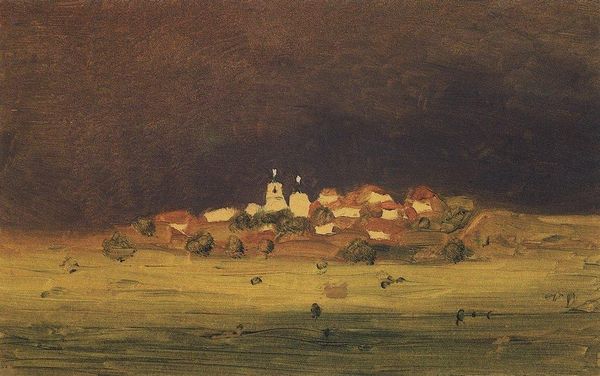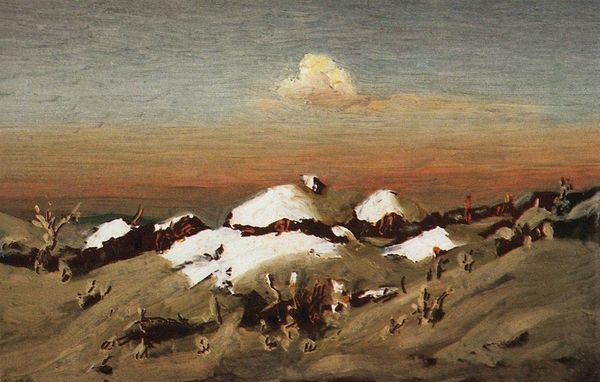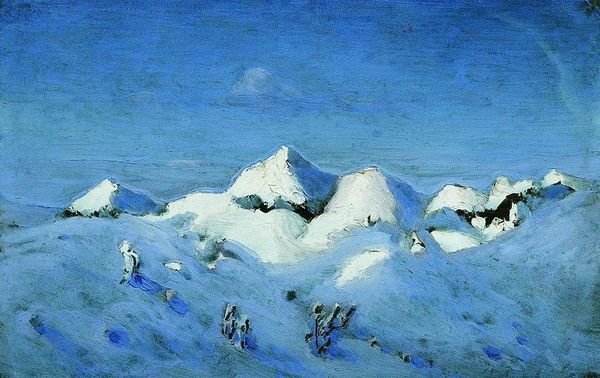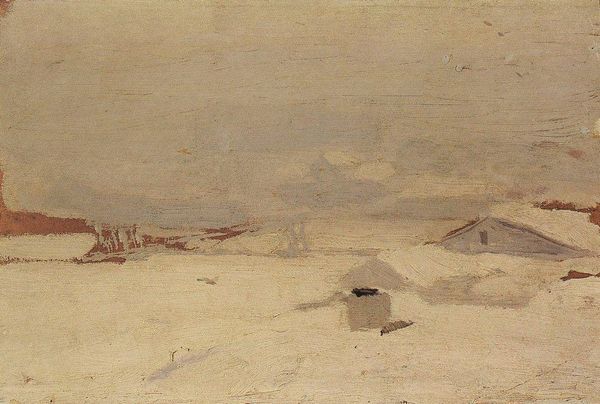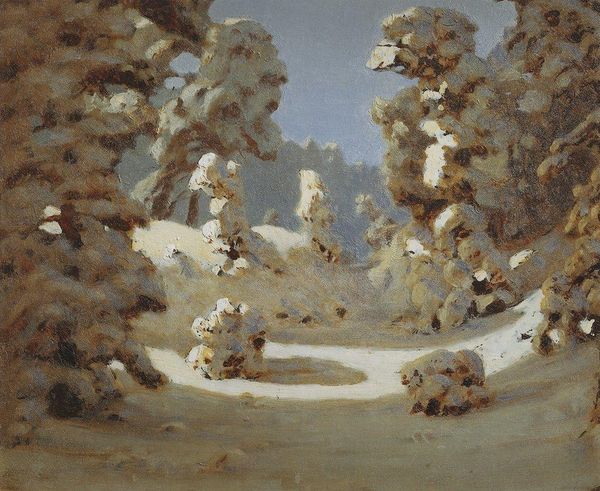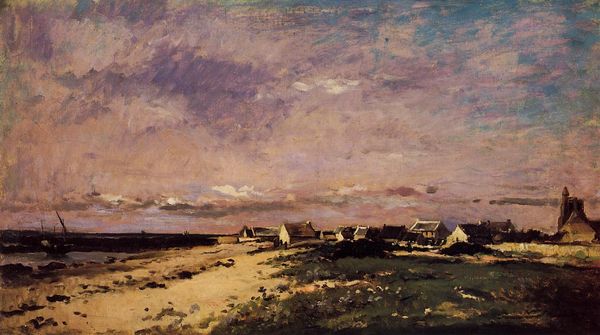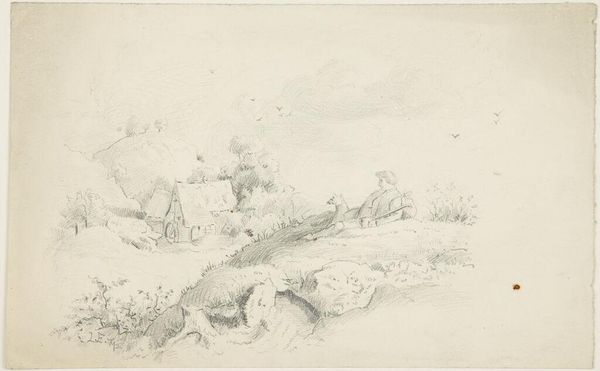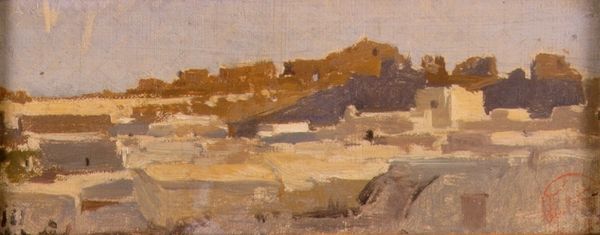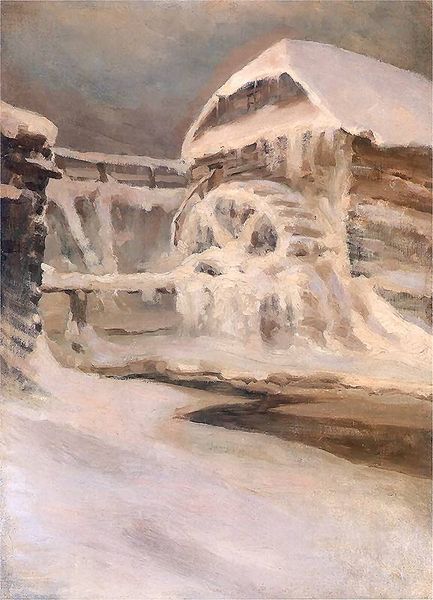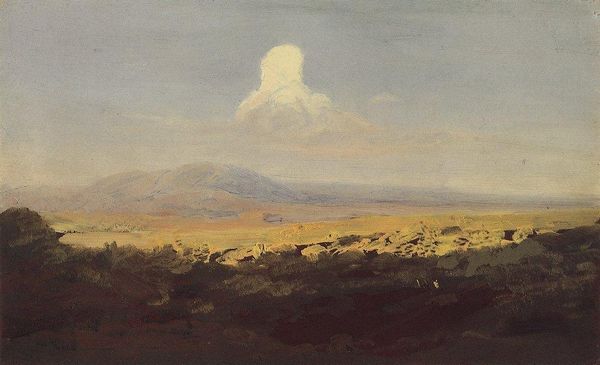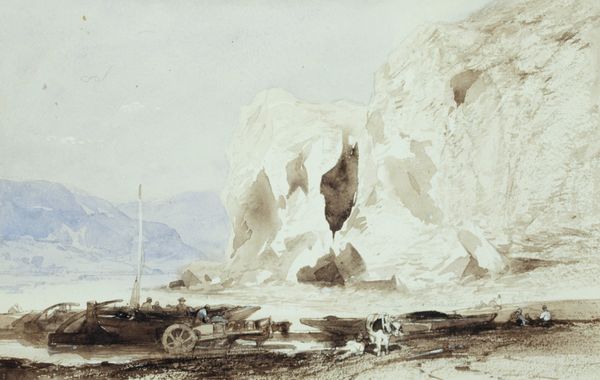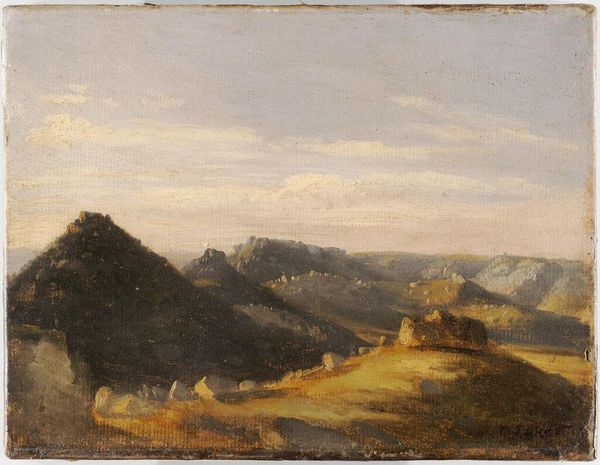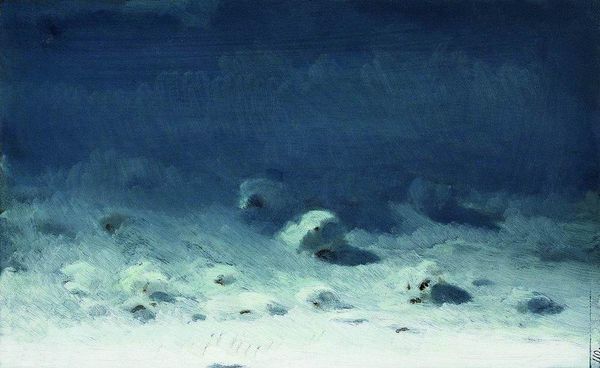
Copyright: Public domain
Curator: I’m immediately drawn in by the sheer texture of the piece. Editor: Let's delve into Arkhyp Kuindzhi's "Winter. Spots of Light on Cottage Roof," painted in 1895 using oil paint and employing impasto techniques to give it such a palpable dimensionality. The romanticism with a foot in realism are so strong. Curator: That impasto is masterfully done; the snow isn’t just depicted, it’s *there*, practically sculpted onto the canvas. It's like a blanket, muffling the sound, offering sanctuary in a harsh world. Editor: Absolutely. Kuindzhi had a keen awareness of how light shaped the image of the humble countryside dwelling. I wonder, did these cozy snowy landscapes serve as reminders of simpler times? How did his patrons see the politics of dwelling played out in this era? Curator: Well, the image of the isolated cottage recurs throughout the art and literature of the period, particularly with the rise of industrialisation, symbolising a yearning for tradition, rootedness, a return to authentic values that capitalism had trampled. These cottages became potent symbols in a rapidly changing society. Editor: The roof almost glows, those 'spots of light' truly make this small habitation a warm focal point in a cold landscape. Even the grey sky seems to emphasize the house's symbolic radiance. Is the use of light calculated here, acting almost like a beacon of hope and resilience, or of tradition? Curator: Yes, precisely. It speaks to a fundamental human need for shelter, safety and the preservation of domestic and family ties against external pressures and anxieties. This visual metaphor connects directly to the wider anxieties of the time. Editor: Looking at it again, the starkness almost speaks to the silent perseverance of those inhabiting it. There is resilience in simplicity, if you will. It’s a wonderful demonstration of art’s capability to mirror shared social concerns. Curator: It really brings the social currents and shared feelings of the 1890s into such clear focus.
Comments
No comments
Be the first to comment and join the conversation on the ultimate creative platform.
